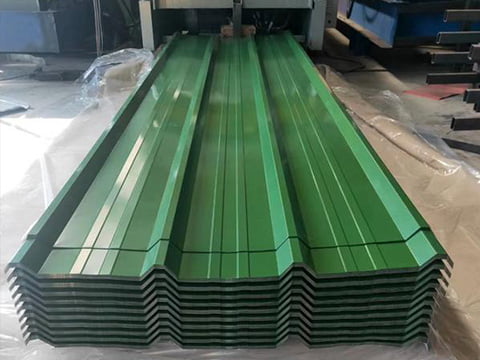Chrome plating process characteristics
Chrome plating process is a relatively complex coating compared to other coatings, with the following characteristics:
Chromium is easily passivated and is therefore very stable in many media.

Car Network

Small dumbbells
The chrome plating solution uses highly oxidizing chromic anhydride (CrO3) rather than chromium salts. Therefore, during the plating process, external ions need to be added to achieve the chromium deposition process. The cathode polarization process is complex. Experienced chrome plating workers can judge whether the chrome plating is normal by the amount of cathode “flowers”. This “flower” is the hydrogen released from the cathode.
The current density used in chrome plating is very high, several dozen times higher than that of general plating types. The cell voltage during the chrome plating process is also very high, 1 times higher than that of other plating types (6V), and is usually around 12V.
The anode used in chrome plating is not metallic chromium, but an insoluble anode made of lead + antimony or lead + tin alloy. Moreover, the dispersion ability of the chrome plating solution is extremely low. For complex-shaped plated parts, auxiliary anodes are required to obtain a uniform thickness coating.
Some other characteristics
During the chrome plating process, power outages are not allowed. The temperature and current must be stable. Parts of different sizes and thickened chrome-plated parts should not be placed in the same tank. In addition, different shapes of parts require different types of hangers, and the selection of hangers must be careful.
In order to ensure that the coating has a strong bonding force, the parts should be hung in the plating tank or hot water tank in advance before chrome plating to make the temperature of the parts consistent with that of the plating solution. For copper and decorative chrome-plated parts, the chrome parts should not be preheated in the plating tank, but can be preheated in hot water.
For parts with complex shapes, in order to improve the deep plating ability, an impulse current can be used at the beginning of power on, that is, a current that is 50%-60% higher than the normal current is used. The current is first impulsed for 2-3 minutes and then chrome is plated under the normal current process specifications.
The chrome plating layer is microporous at 0.25μm. If its thickness exceeds 0.25μm, the chrome layer will have a network of cracks.
The particularity of chrome plating process

Chrome-plated parts

Decorative chrome plating
In the actual chrome plating production process, in addition to the common points with other plating types, special attention should be paid to the application:
Due to its poor dispersibility of the plating solution, in order to make the coating uniform, it is necessary to design special hangers and fixtures according to the geometric shape of the plated parts. The workpiece hanging method and the insulation coating of the hanger are all very important.
It should be noted that a large amount of hydrogen is generated on the cathode and a large amount of oxygen is generated on the anode during the chrome plating process. If the exhaust equipment is not good at exhausting, hydrogen and oxygen will explode. A large amount of hydrogen and oxygen are precipitated, bringing out toxic chrome mist and acid mist, and a good exhaust device is required.
In order to obtain a stable chrome plating layer, chrome plating production requires high current, not only large capacity current, but also large flow rate, at a ratio of 1~1.2A per liter of plating solution (other electroplating is generally 0.3-0.5A/L for electroplating, and cooling settings are required if necessary.
The electroplating stress of the chrome plating layer is large, thinner the pores are, and thicker the cracks are. Therefore, it is necessary to be good at mastering the reasonable thickness of the plating layer. The decorative electroplated chrome layer is generally 0.1-0.5μm, and the electroplating time is 1-4min. Compared with other plating types, the time is fast and the coating is thin.
Classification of chrome plating process
Chromium plating can be divided into two categories according to its use and the characteristics of the chrome plating layer: one is protective decorative chrome plating, commonly known as decorative chrome; the other is hard chrome, that is, functional chrome plating.
When protective decorative chrome plating is performed, copper, nickel, nickel-iron alloy or copper-tin alloy is usually used as the intermediate layer. 0.2-0.5μm chromium is plated on the surface of the bright intermediate layer to improve the decorativeness, corrosion resistance and service life of products such as mechanical parts, light industrial products, instruments, medical equipment, etc.
Among the protective decorative chrome plating, there are common chrome plating with sulfuric acid and chromic anhydride as the plating solution: composite chrome plating with SO4 2- and SIF 6 2- as the plating solution; rapid chrome plating by adding a certain amount of H3BO3 and MgO to the standard chrome plating electrolyte; automatic adjustment chrome plating with SrSO4 and K2SiF6 as catalysts, as well as micro-crack chrome, micro-porous chrome and tetrachromic acid and salt chrome plating; trivalent chrome plating, rolling chrome plating, etc.

Short pipe

Chrome plated round bar
The main purpose of functional chrome plating is to increase the surface hardness of certain parts and components, improve wear resistance, or add functions according to the special needs of the product surface, such as using hard chrome plating, milky white chrome plating, loose hole chrome plating and black chrome plating to prevent light reflection and improve friction conditions. Hard chrome plating is a better way to increase surface hardness, but it has many advantages and disadvantages, so it is not used in many cases.
Summarize
Understanding the characteristics of chrome plating can help you better determine the needs of your products and purchase more suitable products.



